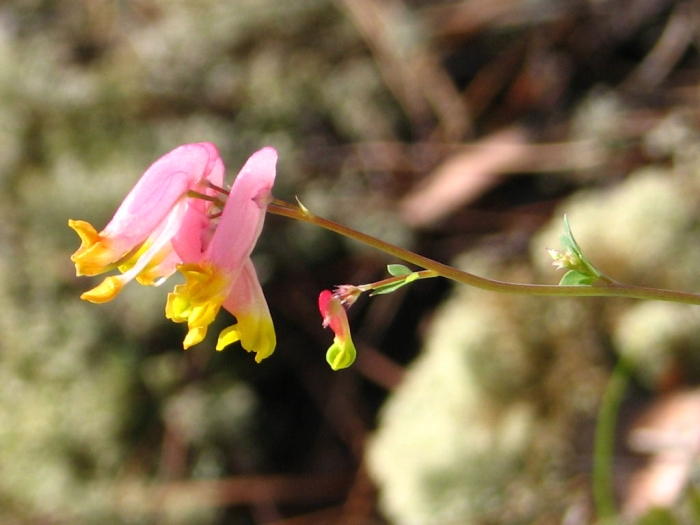Rock Harlequin
(Capnoides sempervirens)
Rock Harlequin (Capnoides sempervirens)
/
/

D. Gordon E. Robertson
CC BY-SA 3.0
















































Estimated Native Range
Summary
Rock Harlequin is valued for its unique flower coloration and its adaptability to rocky and challenging sites, making it a suitable choice for rock gardens and naturalized areas. It is also used for its ability to thrive in part shade, which makes it versatile for various garden settings. While it prefers medium-drained soils, it can tolerate a range of soil conditions, provided they are not waterlogged. Gardeners should be aware that although it has low to medium water requirements, consistent moisture will support more vigorous growth.CC BY-SA 4.0
Plant Description
- Plant Type: Herb
- Height: 1-4 feet
- Width: 0.5-1 feet
- Growth Rate: Moderate
- Flower Color: Pink, Yellow
- Flowering Season: Summer
- Leaf Retention: Deciduous
Growth Requirements
- Sun: Full Sun, Part Shade
- Water: Medium
- Drainage: Medium
Common Uses
Deer Resistant, Low Maintenance, Rock Garden, Showy Flowers, Street Planting
Natural Habitat
native to rocky outcrops, forest clearings, and alpine zones in the Northeastern and Northwestern USA, as well as across Canada and Alaska
Other Names
Common Names: Harlequin Corydalis , Pale-Corydalis , Pink-Corydalis , Harlequin Flower , Pale Corydalis , Pink And Yellow Corydalis , Pink Corydalis , Corydale Toujours Verte , Corydale Toujours-Verte , Corydalis Pâle
Scientific Names: Corydalis sempervirens , Capnoides sempervirens , Corydalis glauca , Fumaria sempervirens , Corydalis rosea , Corydalis sempervirens f. candida , Corydalis annua , Capnoides glauca , Fumaria glauca , Fumaria rosea
GBIF Accepted Name: Capnoides sempervirens (L.) Borkh.